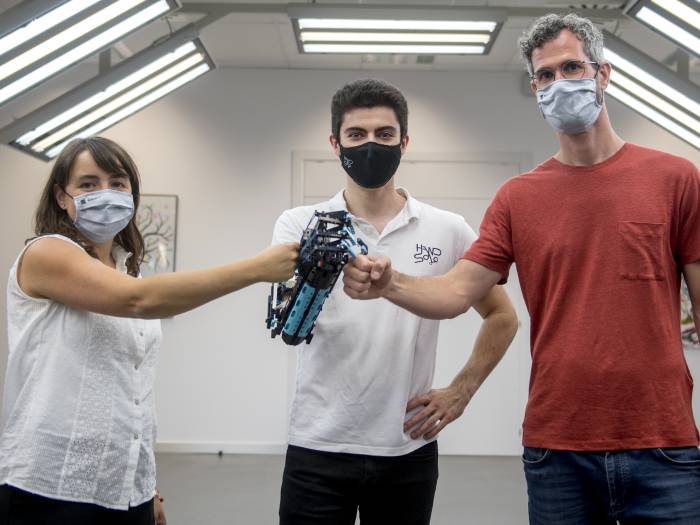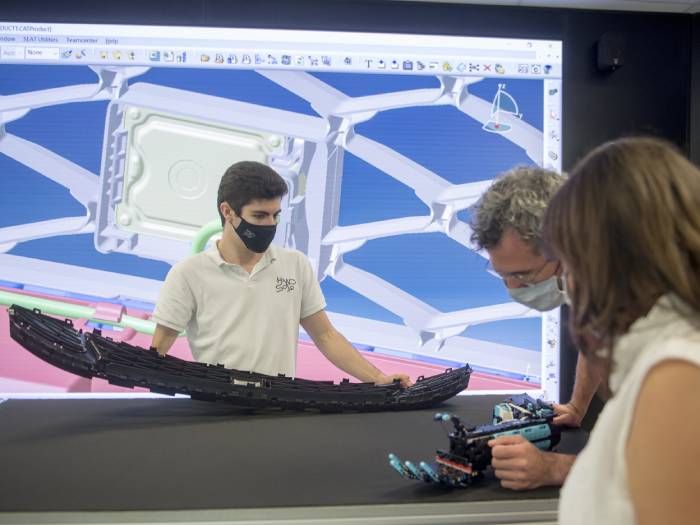David Aguilar and SEAT: research and innovation that improve lives
David Aguilar is a young inventor who developed his first prosthesis as a child, obtaining a Guinness World Record in the process, and since then he hasn’t stopped innovating. He shares an ambition with SEAT: to design new solutions for everyday life.
Some people never stop pushing their boundaries, like David Aguilar. Born with Poland syndrome, at the age of just nine he designed the first prosthesis for his right arm with pieces from a construction set. Now, he’s on his fifth model, which he even presented to NASA at the Cross Industry Innovation Summit when he was nineteen.
Hand Solo, as David calls himself, also holds a Guinness World Record for the “First functional LEGO® prosthetic arm”, and is studying bioengineering in order to continuing improving the lives of other people. This spirit of innovation is identical to that of SEAT.
Innovative spirit
SEAT is, after all, Spain’s leading industrial investor in R&D, and is also looking towards innovation to create mobility solutions for today and the future. “For me, visiting this company is an opportunity to talk from one innovator to another,” says David during his visit to the SEAT S.A. Technical Centre, which has the most advanced technology for Research and Development activities.
David shared his story with some SEAT specialists: “I designed this prosthesis digitally, then I built it little by little with parts I had at home. Using a small pressure sensor, I can make my arm move and my hand open and close at the same time.”
Changing the status quo

“Our new projects also start with a 3D design,” explains Teresa Forradellas, head of the Chassis Electronics Development team, while showing him a screen and then the exact part where they insert the front radar for the driving assistance systems.
“Just like in your prosthesis, we’ve also used a sensor to help us, in this case in the Travel Assist and Adaptive Cruise Control (ACC) functions, to increase the safety of our cars by detecting obstacles, other vehicles and even pedestrians,” Forradellas adds as she talks to David, who loves to inspire others to change the status quo. “The important thing is to fight for your idea, against all odds,” he says. “It’s as if someone were to tell you that the car of the future can’t fly.”
Looking to the future

“For those of us who today develop driving assistance systems, innovation means thinking about moving towards the autonomous car,” explains Oriol Mas, Head of Driving Assistance Systems, as he shows David Aguilar a small robot reproduction of the cameras and ultrasound sensors used on a vehicle to detect everything that happens around it.
“What we have in common with David is that we aren’t satisfied with today’s reality and are constantly looking for new solutions,” adds Mas, before turning back to Hand Solo: “Your passion was construction sets, and you used it to create your prostheses. Ours is designing mobility, and for this, we apply innovation across the board.”
Continuous progress
“You’ve made five different prostheses, and continuously improve their functions. We do the same, working intensely on each project to continue moving forward,” Teresa comments.
“SEAT and I share the same principle of innovation. I make prostheses to improve people’s quality of life, and here they do exactly the same with their vehicles,” concludes David, who has held a seminar for SEAT employees, promoting the launch of INNOVA, a new digital platform created to connect people, ideas and projects. It is a space that promotes new ways of working based on co-creation, following a start-up model and exploring new business opportunities and synergies.
Source: SEAT S.A.
